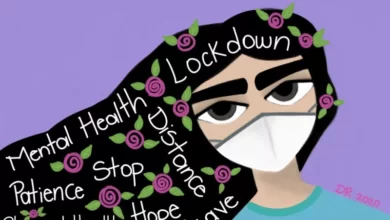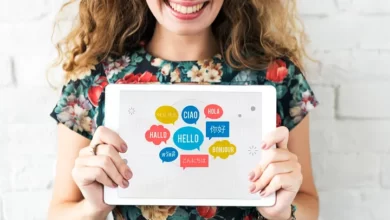The Use of Virtual and Augmented Reality in Education

Virtual and Augmented Reality (VR/AR) is rapidly changing the landscape of education. These technologies are transforming the way teachers teach and students learn, making the educational experience more immersive, interactive, and engaging. In this article, we will explore the various ways in which VR/AR is being used in education and how it is revolutionizing the learning process.
The Benefits of Virtual and Augmented Reality in Education
Enhancing Learning through Immersion
Virtual and augmented reality provides students with an immersive learning experience. They can transport learners to different locations, historical eras, or even microscopic environments that are difficult to replicate in the physical world. This enables students to explore, experiment, and interact with their surroundings in a way that is not possible in traditional classrooms.
For example, students studying biology can use VR/AR technology to examine the structure and function of cells, tissues, and organs. They can explore different systems in the human body, such as the circulatory or nervous system, and see how they work together. This allows for a more engaging and memorable learning experience, as students can visualize complex concepts in a tangible way.
Improving Engagement and Retention
VR/AR also has the potential to improve student engagement and retention. By providing interactive and personalized learning experiences, students are more likely to be motivated and interested in the subject matter. This can lead to improved academic performance and a deeper understanding of the material.
In addition, VR/AR can be used to gamify learning, turning educational activities into fun and challenging experiences. This can make the learning process more enjoyable and memorable, leading to better long-term retention of knowledge.
Enabling Personalized Learning
Virtual and augmented reality can also enable personalized learning experiences. By adapting the content and activities to the needs and preferences of each student, educators can create a more effective and efficient learning environment.
For example, VR/AR can be used to simulate different scenarios and provide feedback based on the student’s responses. This can help identify areas of weakness and tailor the learning experience to address them. Additionally, VR/AR can be used to provide additional support to students who are struggling, such as by offering extra explanations or practice activities.
Increasing Accessibility and Inclusivity
Finally, VR/AR can increase accessibility and inclusivity in education. By providing virtual environments that can be accessed from anywhere, students who may not have access to traditional classrooms can still participate in learning activities. This can be especially beneficial for students who live in remote or underprivileged areas, or who have disabilities that make attending physical classes difficult.
VR/AR can also be used to provide more inclusive learning experiences for students with disabilities. For example, students with visual impairments can use VR/AR to explore and interact with virtual environments, while students with hearing impairments can benefit from visual and interactive learning activities.
In the next section, we will explore some of the specific applications of VR/AR in education.
Virtual and Augmented Reality Applications in Education
Virtual Field Trips
One of the most popular applications of VR/AR in education is virtual field trips. With VR/AR technology, students can explore different parts of the world, visit historical landmarks, or even travel to outer space. This can provide an engaging and immersive learning experience that is not possible through traditional textbooks or lectures.
For example, students can use VR/AR to explore the pyramids of Egypt, the Great Wall of China, or the depths of the ocean. They can learn about the history, culture, and geography of different places in a way that is interactive and memorable.
Laboratory Simulations
VR/AR can also be used to simulate laboratory experiments and procedures. This can provide a safe and cost-effective way for students to practice and learn skills that are difficult to replicate in a traditional classroom setting.
For example, students studying chemistry can use VR/AR to simulate experiments and observe the results without the risk of injury or damage to equipment. Similarly, students studying medicine can use VR/AR to practice surgical procedures or
medical interventions, allowing them to gain hands-on experience without the need for a physical patient.
Interactive Learning Activities
VR/AR can also be used to create interactive learning activities that are more engaging and memorable than traditional activities. For example, students can use VR/AR to participate in historical reenactments, solve puzzles, or explore virtual environments.
This can make learning more fun and challenging, as students are able to use their critical thinking skills and creativity to solve problems and complete tasks. In addition, interactive learning activities can provide instant feedback to students, helping them to identify areas of strength and weakness.
Language Learning
Another application of VR/AR in education is language learning. With VR/AR technology, students can immerse themselves in different language environments and practice their skills in a more authentic way.
For example, students can use VR/AR to interact with native speakers, practice their pronunciation, and participate in role-playing activities. This can provide a more engaging and effective language learning experience than traditional classroom activities.
Accessibility and Inclusivity
Finally, VR/AR can be used to increase accessibility and inclusivity in education. By providing virtual environments that can be accessed from anywhere, students who may not have access to traditional classrooms can still participate in learning activities. This can be especially beneficial for students who live in remote or underprivileged areas, or who have disabilities that make attending physical classes difficult.
In addition, VR/AR can be used to provide more inclusive learning experiences for students with disabilities. For example, students with visual impairments can use VR/AR to explore and interact with virtual environments, while students with hearing impairments can benefit from visual and interactive learning activities.



